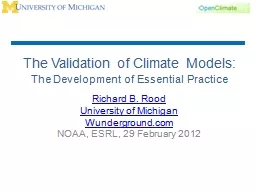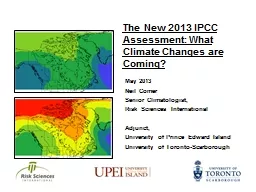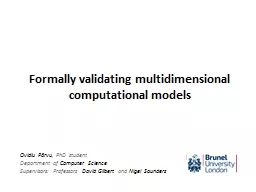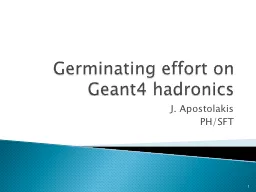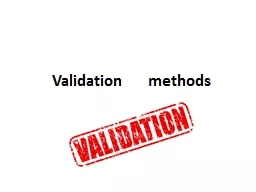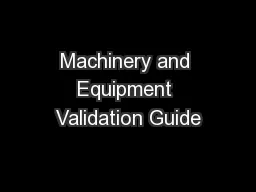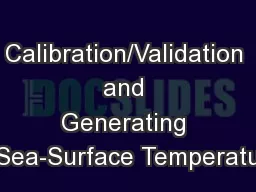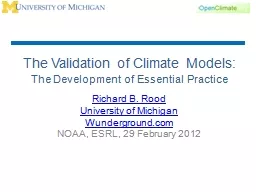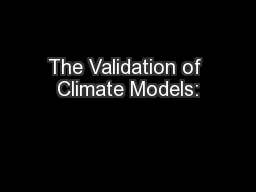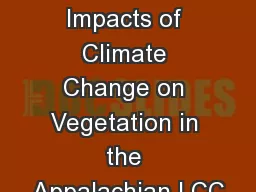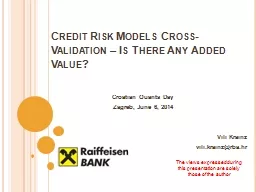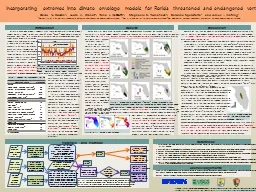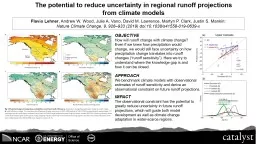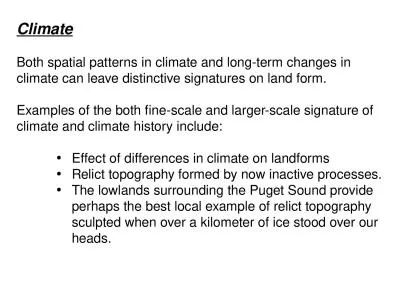PPT-The Validation of Climate Models:
Author : alida-meadow | Published Date : 2016-05-01
The Development of Essential Practice Richard B Rood University of Michigan Wundergroundcom NOAA ESRL 29 February 2012 Deep Background As a manager at NASA I felt
Presentation Embed Code
Download Presentation
Download Presentation The PPT/PDF document "The Validation of Climate Models:" is the property of its rightful owner. Permission is granted to download and print the materials on this website for personal, non-commercial use only, and to display it on your personal computer provided you do not modify the materials and that you retain all copyright notices contained in the materials. By downloading content from our website, you accept the terms of this agreement.
The Validation of Climate Models:: Transcript
Download Rules Of Document
"The Validation of Climate Models:"The content belongs to its owner. You may download and print it for personal use, without modification, and keep all copyright notices. By downloading, you agree to these terms.
Related Documents

